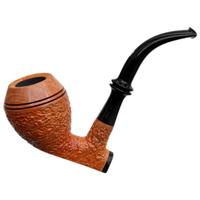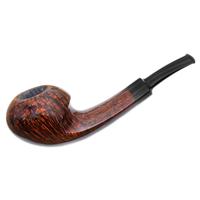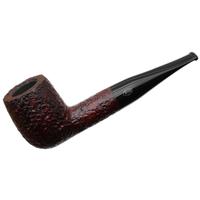All,
For those that missed pipes 1 and 2, you can find them here , and here .
I was born, raised, and still live in Alaska and throughout that time hunting wild game has been a core part of my life, culture, and subsistence. One of the most interesting animals to hunt in Alaska is the Sitka Blacktail deer. While being one of the most dainty and miniscule deer species in North America (a huge specimen weighing 200lbs), they also inhabit some of the world's harshest terrain. From SE Alaska, where steep slopes, high winds, and 13 feet of yearly rain make it a challenge for any animal, to Kodiak island where windswept 6 foot tall grasses may be all that keeps you hidden from one of the highest concentrations of the some of the world's largest bears, constantly hunting you. Harsh winters in both areas can have devastating effects on populations as well, but the Blacktail deer not only survives, but often thrives in these conditions. They are also some of the most delicious game meat you can find.
For the third pipe in the set I have chosen to honor the Blacktail's lithe and graceful, yet rugged nature with a shape that I feel encompasses both, that of a slightly bent Cutty with a plateau rim. This Cutty features an antler shank mount, using antler bases from a blacktail deer I harvested myself on Kodiak island. I wanted to keep the shape svelte and fluid like a fleeing blacktail, but also add a sense of ruggedness so I chose to leave the rim as a plateau, and utilize a contrast sandblast to make the pipe a little more organic in nature. Blacktail deer have much more diminutive antler structure than most deer species, including their brow tines which are often a simple small nub. I chose to replicate that in the foot of the Cutty, by making it a mostly aesthetic nub similar to what is found as a brow tine on many blacktail racks.
Then we come to the stem. You will see two faux ivory white bands, one slightly larger than the other. This is to honor the most heart pounding moment in blacktail hunting. When a blacktail buck is staring straight at you, you see the contrast of their black head and nose, along with their signature two white patches on the neck and breast, one usually slightly larger than the other. At that point you have moments to pull the trigger, or your prey will be gone in a flash. Now given that we had to chop the base of an antler off to make this possible, I also requested the carver use the rest of that antler to create a matching tamper with a shell casing base to go along with this pipe. He surprised me by also carving "Alaska" into the tamper. As with all pipes in this set, a 49 is lasered on to the base to honor my home, the 49th State in the Union.
Again, my choice for a carver was obvious for this pipe. Josh Ronish with Dragon Briars has extensive experience with antler, and an amazing talent for taking complex pipe design and making them a reality with unrivaled accuracy and efficiency.
Ladies and Gents, the Josh Ronish Blacktail Cutty:
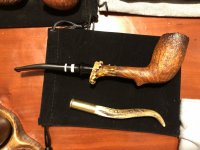
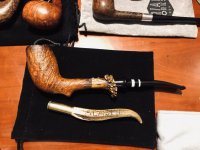
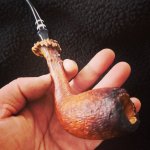
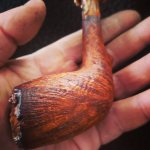
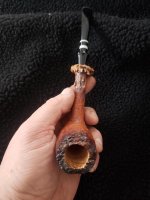

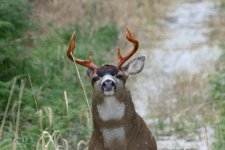
For those that missed pipes 1 and 2, you can find them here , and here .
I was born, raised, and still live in Alaska and throughout that time hunting wild game has been a core part of my life, culture, and subsistence. One of the most interesting animals to hunt in Alaska is the Sitka Blacktail deer. While being one of the most dainty and miniscule deer species in North America (a huge specimen weighing 200lbs), they also inhabit some of the world's harshest terrain. From SE Alaska, where steep slopes, high winds, and 13 feet of yearly rain make it a challenge for any animal, to Kodiak island where windswept 6 foot tall grasses may be all that keeps you hidden from one of the highest concentrations of the some of the world's largest bears, constantly hunting you. Harsh winters in both areas can have devastating effects on populations as well, but the Blacktail deer not only survives, but often thrives in these conditions. They are also some of the most delicious game meat you can find.
For the third pipe in the set I have chosen to honor the Blacktail's lithe and graceful, yet rugged nature with a shape that I feel encompasses both, that of a slightly bent Cutty with a plateau rim. This Cutty features an antler shank mount, using antler bases from a blacktail deer I harvested myself on Kodiak island. I wanted to keep the shape svelte and fluid like a fleeing blacktail, but also add a sense of ruggedness so I chose to leave the rim as a plateau, and utilize a contrast sandblast to make the pipe a little more organic in nature. Blacktail deer have much more diminutive antler structure than most deer species, including their brow tines which are often a simple small nub. I chose to replicate that in the foot of the Cutty, by making it a mostly aesthetic nub similar to what is found as a brow tine on many blacktail racks.
Then we come to the stem. You will see two faux ivory white bands, one slightly larger than the other. This is to honor the most heart pounding moment in blacktail hunting. When a blacktail buck is staring straight at you, you see the contrast of their black head and nose, along with their signature two white patches on the neck and breast, one usually slightly larger than the other. At that point you have moments to pull the trigger, or your prey will be gone in a flash. Now given that we had to chop the base of an antler off to make this possible, I also requested the carver use the rest of that antler to create a matching tamper with a shell casing base to go along with this pipe. He surprised me by also carving "Alaska" into the tamper. As with all pipes in this set, a 49 is lasered on to the base to honor my home, the 49th State in the Union.
Again, my choice for a carver was obvious for this pipe. Josh Ronish with Dragon Briars has extensive experience with antler, and an amazing talent for taking complex pipe design and making them a reality with unrivaled accuracy and efficiency.
Ladies and Gents, the Josh Ronish Blacktail Cutty:










